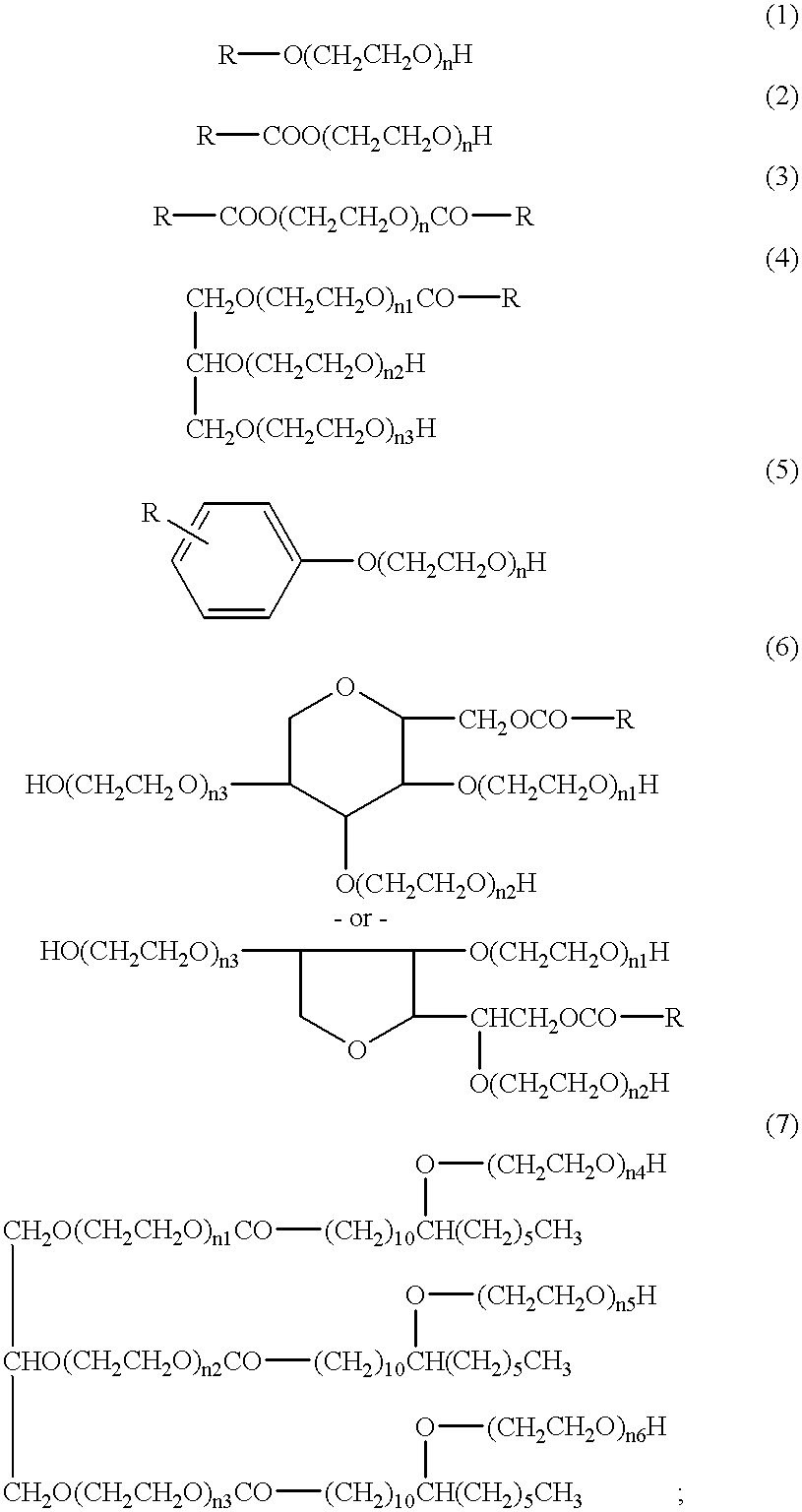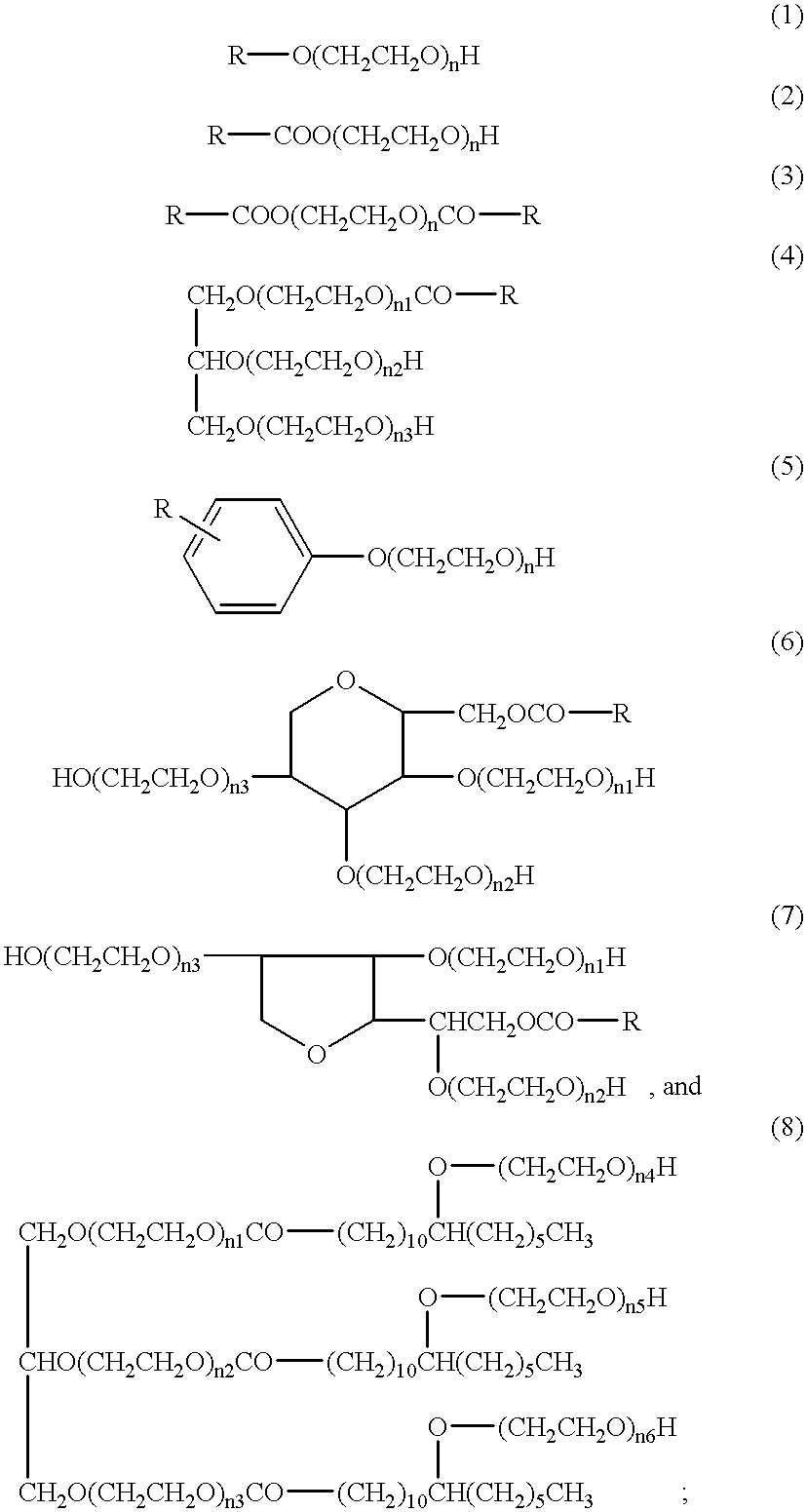Diluting reagent and method compelling time-independent consistency in MCV assay
a time-dependent consistency and reagent technology, applied in the field of blood sample mean corpuscular volume assay, can solve the problems of blood sample as such no longer yielding suitable mcv assay values, actual mcv changes with elapsed time of blood drawing, and no disclosure of a method of restraining change in measured mcv
- Summary
- Abstract
- Description
- Claims
- Application Information
AI Technical Summary
Problems solved by technology
Method used
Image
Examples
embodiment 1
Blood samples were treated with EDTA-3K anti-coagulant. The samples were then subjected to an MCV assay in Sysmex Co. Ltd.'s automated hematological analyzer SE-9500 immediately post blood-drawing, and at 72 hours thereafter. The blood samples were stored at 25.degree. C.
Reagent A (Conventional): 15 mM Phosphate Buffer Solution
The osmotic pressure of this reagent was adjusted with sodium chloride to be approximately 250 mOsm / kg, and
Reagent B: 15 mM Phosphate Buffer Solution; 0.015% Polyoxyethylene (20) Oleyl Ether
The osmotic pressure of this reagent was adjusted with sodium chloride to be approximately 320 mOsm / kg, and its pH was adjusted with sodium hydroxide to be approximately 7.8.
embodiment 2
Blood samples were treated with EDTA-2K anti-coagulant. The samples were then subjected to an MCV assay in Sysmex Co. Ltd's automated hematological analyzer SE-9500 12 hours and 48 hours post blood-drawing. The blood samples were stored at 25.degree. C.
Reagent A: 15 mM Phosphate Buffer Solution
The osmotic pressure of this reagent was adjusted with sodium chloride to be approximately 250 mOsm / kg, and its pH was adjusted with sodium hydroxide to be approximately 7.8.
Reagent C: 15 mM Phosphate Buffer Solution
The osmotic pressure of this reagent was adjusted with sodium chloride to be approximately 285 mOsm / kg, and its pH was adjusted with sodium hydroxide to be approximately 7.8.
Reagent D: 15 mM Phosphate Buffer Solution; 0.015% Polyoxyethylene (20) Oleyl Ether The osmotic pressure of this reagent was adjusted with sodium chloride to be approximately 285 mOsm / kg, and its pH was adjusted with sodium hydroxide to be approximately 7.8.
The results indicate that the increase in osmotic pres...
embodiment 3
In Embodiment 3, variation in MCV was measured employing reagents prepared from Reagent D by varying its osmotic pressure. The osmotic pressures of the reagents were adjusted by changing the amount of sodium chloride added. The blood samples was stored at 25.degree. C. The samples were assayed in Sysmex Co. Ltd.'s automated hematological analyzer SE-9500 to determine MCV.
The results indicate that variation in MCV could be controlled to be within .+-.4 (fL) by keeping the osmotic pressure of the reagent in the range of 260-320 mOsm / kg. Within this range, higher osmotic pressure demonstrated more control over variation in MCV.
PUM
 Login to View More
Login to View More Abstract
Description
Claims
Application Information
 Login to View More
Login to View More - R&D
- Intellectual Property
- Life Sciences
- Materials
- Tech Scout
- Unparalleled Data Quality
- Higher Quality Content
- 60% Fewer Hallucinations
Browse by: Latest US Patents, China's latest patents, Technical Efficacy Thesaurus, Application Domain, Technology Topic, Popular Technical Reports.
© 2025 PatSnap. All rights reserved.Legal|Privacy policy|Modern Slavery Act Transparency Statement|Sitemap|About US| Contact US: help@patsnap.com



